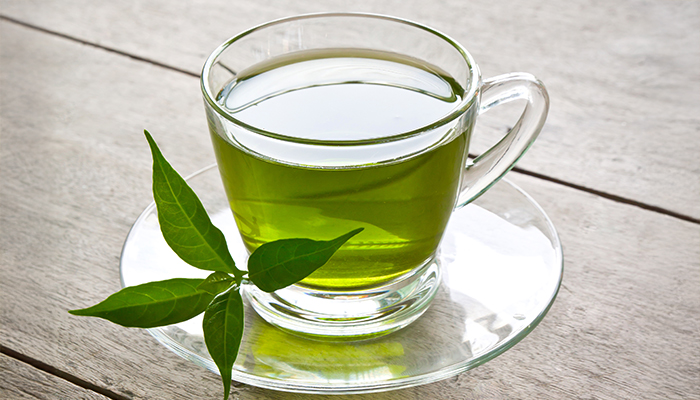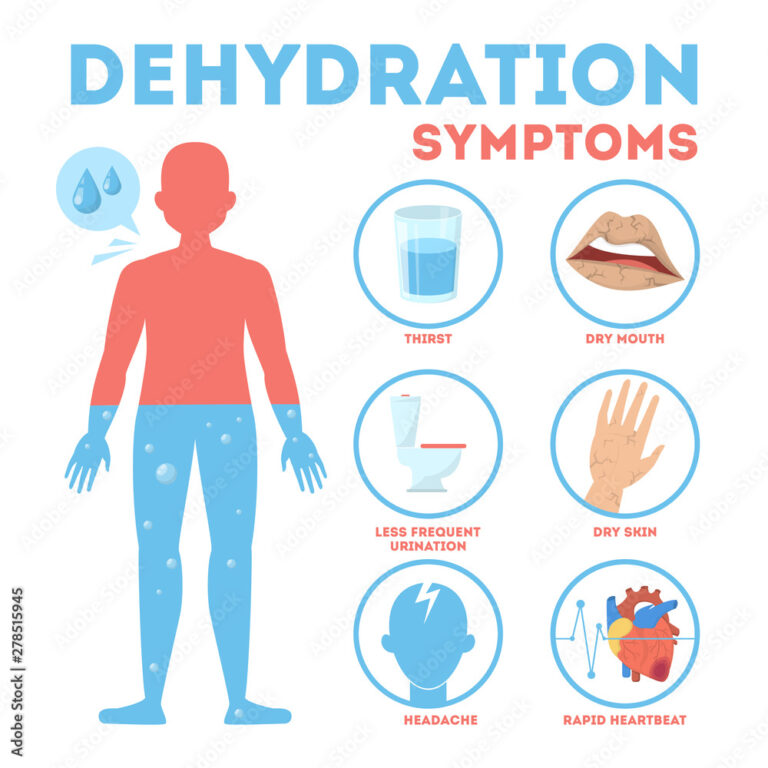Stop Crying and Start Cooking: Maximizing the Health Power of Onions
The kitchen, for many, is a sanctuary. A place where ingredients transform, aromas intertwine, and magic, in its most edible form, unfolds. Yet, there’s one humble bulb that frequently interrupts this culinary reverie, forcing us into a teary-eyed, snotty-nosed surrender before its pungent glory can be fully appreciated. We’re talking, of course, about the onion – the unassuming hero of countless dishes, and the bane of sensitive eyes everywhere.
But what if those tears, that sting, that initial resistance, were merely an invitation? An invitation to look deeper, beyond the surface irritation, into a world of profound health benefits and culinary versatility that positions the onion not just as a flavor enhancer, but as a genuine powerhouse of wellness? This is the story of the onion, a journey from ancient remedies to modern superfood, urging us to "stop crying and start cooking," to unlock and maximize the unparalleled health power hidden within its many layers.
The Onion’s Ancient Roots: A Legacy of Reverence
Before we delve into the scientific marvels of the onion, it’s essential to understand its profound historical significance. The onion isn’t merely a recent culinary discovery; it’s a vegetable steeped in millennia of human history, revered and utilized by civilizations across the globe.
Imagine ancient Egypt, where onions weren’t just food but symbols of eternity, their concentric layers mirroring everlasting life. They were depicted in tomb paintings, offered to the gods, and even found in the eye sockets of mummies, believed to provide strength and good fortune in the afterlife. The builders of the pyramids, it is said, consumed vast quantities of onions and garlic, not just for sustenance, but for their perceived ability to ward off illness and boost endurance under grueling conditions.
The Greeks and Romans, too, understood the onion’s potency. Greek athletes consumed them in large quantities, believing they lightened the balance of the blood. Roman gladiators were rubbed down with onions to firm up their muscles. The physician Dioscorides, in his monumental work De Materia Medica, lauded onions for their medicinal properties, including their use as a diuretic and a remedy for various ailments.
Moving into the Middle Ages, onions, along with beans and cabbage, formed the bedrock of the European diet, particularly for the working classes. They were not only a reliable source of nutrition that could be stored for months, but also a vital medicine against infections and even as a primitive antiseptic. Crusaders, upon returning from their ventures, brought back new varieties and a renewed appreciation for their culinary and medicinal virtues.
This enduring legacy, spanning continents and epochs, isn’t accidental. It speaks to an intuitive understanding, long before the advent of modern chemistry, that the onion possessed something extraordinary. Something that fueled bodies, healed ailments, and enriched palates. This historical reverence sets the stage for our modern exploration, providing a rich tapestry against which to appreciate its contemporary scientific validation.
The Science of the Scent and the Sting: Why We Cry, and Why It Matters
Let’s address the elephant in the room – or rather, the tear-inducing volatile compound in the onion. Why do we cry when we cut an onion? It’s a question almost as old as cooking itself, and the answer lies in a fascinating biochemical defense mechanism.
When an onion cell is ruptured – say, by the sharp edge of a knife – its contents spill out. Among these contents are enzymes called alliinases and sulfur compounds known as S-alk(en)yl cysteine sulfoxides. When these two meet, a rapid chemical reaction occurs, producing unstable sulfenic acids. These sulfenic acids then spontaneously rearrange to form syn-propanethial-S-oxide, a volatile sulfur compound that wafts into the air and, upon contact with the moisture in our eyes, converts into sulfuric acid. It’s this mild acid that irritates the lacrimal glands, triggering our body’s natural response: tears to wash away the irritant.
While this reaction might seem like a mere annoyance, it’s crucial to understanding the onion’s health power. Those very sulfur compounds, responsible for the tears and the distinctive pungent aroma, are a key part of the onion’s therapeutic arsenal. They belong to a broader class of organosulfur compounds, which are renowned for their potent antioxidant, anti-inflammatory, and immune-boosting properties. So, the tears are not just a nuisance; they are a direct manifestation of the powerful, bioactive compounds at work.
Unveiling the Health Arsenal: The Onion’s Nutritional Profile
Beyond the initial sting, the onion reveals itself as a nutritional powerhouse, packed with vitamins, minerals, and an impressive array of bioactive compounds that contribute to its profound health benefits.
-
Flavonoid Fortification: The Quercetin King
If the onion had a crown jewel, it would undoubtedly be quercetin. This potent flavonoid, particularly abundant in red and yellow onions, is a superstar antioxidant and anti-inflammatory agent. Quercetin is not merely a scavenger of free radicals; it actively modulates numerous cellular pathways involved in inflammation and immune response.- Cardiovascular Health: Quercetin contributes significantly to heart health. It helps to relax blood vessels, potentially lowering blood pressure. Studies have shown its ability to inhibit the oxidation of LDL ("bad") cholesterol, a key step in the development of atherosclerosis (hardening of the arteries). Its anti-platelet aggregation properties also suggest a role in preventing blood clots.
- Anti-Inflammatory Action: Chronic inflammation is a root cause of many modern diseases, from arthritis to cancer. Quercetin acts as a natural antihistamine and anti-inflammatory, inhibiting the release of histamine and other inflammatory mediators. This makes it beneficial for conditions like allergies, asthma, and inflammatory bowel diseases.
- Anti-Cancer Potential: Research has extensively explored quercetin’s anti-cancer properties. It has been shown to induce apoptosis (programmed cell death) in various cancer cell lines, inhibit tumor growth, and prevent the spread of cancer cells. While not a cure, a diet rich in quercetin-containing foods like onions is considered a protective measure.
-
Anthocyanin Advantage: The Red Onion’s Radiance
The vibrant purple-red hue of red onions isn’t just for show; it’s a visual cue to the presence of anthocyanins. These powerful antioxidants belong to the flavonoid family and are responsible for the rich colors in many fruits and vegetables.- Enhanced Antioxidant Capacity: Anthocyanins are particularly effective at neutralizing free radicals, contributing to overall cellular protection and reducing oxidative stress throughout the body.
- Cognitive Benefits: Emerging research suggests anthocyanins may play a role in brain health, potentially improving memory and cognitive function by protecting neuronal cells from damage.
- Anti-Diabetic Effects: Some studies indicate that anthocyanins can help improve insulin sensitivity and lower blood sugar levels, offering benefits for individuals with diabetes or those at risk.
-
Gut Health Guru: Prebiotic Powerhouses (Fructans and Inulin)
The onion is a champion for gut health, thanks to its high content of prebiotics, primarily fructans and inulin. These are non-digestible dietary fibers that pass through the upper digestive tract undigested, reaching the large intestine where they serve as food for beneficial gut bacteria (probiotics).- Balanced Microbiome: By selectively feeding good bacteria like Bifidobacteria and Lactobacillus, onions help to foster a healthy, balanced gut microbiome. A thriving microbiome is linked to improved digestion, enhanced nutrient absorption, a stronger immune system, and even better mood and mental health.
- Immune System Modulation: A significant portion of our immune system resides in the gut. A healthy microbiome, nurtured by prebiotics, directly contributes to a robust immune response, helping the body defend against pathogens.
- Constipation Relief: The fiber content, including prebiotics, adds bulk to stool and promotes regular bowel movements, aiding in the prevention and relief of constipation.
-
Cardiovascular Guardian: Sulfur Compounds and Beyond
The sulfur compounds we discussed earlier, the very ones that make us cry, are central to the onion’s heart-protective properties.- Cholesterol and Triglyceride Reduction: Some organosulfur compounds have been shown to help lower total cholesterol and triglyceride levels, both important markers for heart disease risk.
- Blood Pressure Regulation: Beyond quercetin, other compounds in onions contribute to vasodilation, helping to relax blood vessels and reduce blood pressure.
- Anti-Clotting Effects: Certain sulfur compounds act as natural anti-platelet agents, helping to prevent the formation of dangerous blood clots that can lead to heart attacks and strokes.
-
Blood Sugar Stabilizer: A Sweet Relief
Despite their slightly sweet taste when cooked, onions can actually help regulate blood sugar levels, a significant benefit for individuals with diabetes or insulin resistance.- Chromium Content: Onions are a good source of chromium, a trace mineral that plays a crucial role in carbohydrate and lipid metabolism. Chromium enhances the action of insulin, helping cells absorb glucose more effectively.
- Sulfur Compounds and Quercetin: Both organosulfur compounds and quercetin contribute to improved insulin sensitivity and can help lower fasting blood sugar levels.
-
Bone Health Booster: A Surprising Ally
While often overshadowed by dairy, onions quietly contribute to bone health. They contain compounds that can help reduce bone loss, particularly in older women who are at risk of osteoporosis. Some studies suggest that regular onion consumption may increase bone density and reduce fracture risk. -
Vitamin and Mineral Matrix:
Beyond these potent bioactive compounds, onions provide a good dose of essential vitamins and minerals:- Vitamin C: A powerful antioxidant and immune booster.
- Vitamin B6 and Folate: Important for metabolism, nerve function, and red blood cell formation.
- Potassium: Crucial for blood pressure regulation and fluid balance.
- Manganese: Involved in bone formation, metabolism, and antioxidant defense.
From Field to Fork: Maximizing Nutritional Value
The health benefits of onions are undeniable, but how we select, store, and prepare them can significantly impact the bioavailability and potency of their beneficial compounds.
-
Variety is the Spice of Life (and Health):
- Red Onions: Generally have the highest concentration of anthocyanins and quercetin, making them excellent for raw applications in salads and salsas.
- Yellow Onions: The workhorse of the kitchen, rich in quercetin. Ideal for sautéing, roasting, and building flavor bases.
- White Onions: Milder in flavor, with a good but slightly lower quercetin content than yellow onions. Great for lighter dishes.
- Sweet Onions (Vidalia, Walla Walla): Lower in sulfur compounds, hence less pungent and fewer tears. While delicious, their lower sulfur content might mean slightly fewer organosulfur health benefits.
- Shallots: A delicate, complex flavor, shallots are high in quercetin and offer similar benefits in a smaller package.
- Green Onions (Scallions): Eaten both white and green parts, they offer a fresh, mild onion flavor and are a good source of Vitamin K and C, though lower in the heavier sulfur compounds found in mature bulbs.
-
Storage Savvy:
Proper storage is key to preserving the onion’s nutrients and preventing spoilage. Store whole, unpeeled onions in a cool, dry, dark, and well-ventilated place (like a pantry or mesh bag), away from potatoes (which release moisture and gas that can spoil onions). Avoid refrigeration for whole onions, as the cold and humidity can turn them soft and mushy. Once cut, however, onions should be tightly wrapped and refrigerated to prevent odor transfer and maintain freshness. -
Preparation Techniques and Their Impact:
This is where the "cooking" part of our mantra truly comes alive. The method of preparation profoundly influences the onion’s nutritional profile.-
Raw Power: Eating onions raw maximizes the bioavailability of certain heat-sensitive compounds, particularly the precursors to allicin (though true allicin is more associated with garlic, onions have similar beneficial sulfur compounds). Raw red onions in salads, salsas, or as garnishes offer a powerful punch of quercetin and anthocyanins. However, some people find raw onions difficult to digest due to their potent compounds.
-
The Gentle Sweat: Sautéing onions over low to medium heat, allowing them to soften and become translucent without browning, is a common and effective way to integrate them into dishes. This method retains a good portion of their beneficial compounds while mellowing their sharp flavor. The fat used (e.g., olive oil) can also aid in the absorption of fat-soluble antioxidants.
-
Caramelization: A Sweet Transformation: The slow caramelization of onions, a process that can take 30-60 minutes, transforms their pungent compounds into sweet, complex sugars through the Maillard reaction. While some volatile sulfur compounds may be lost during this extended cooking, the process concentrates other beneficial compounds and creates new flavor molecules. The resulting sweetness makes them incredibly versatile for tarts, sandwiches, and as a base for sauces.
-
Roasting and Grilling: High-heat cooking methods like roasting or grilling can lead to some loss of heat-sensitive vitamins and certain flavonoids. However, they also concentrate the onion’s natural sugars and flavors, making them incredibly delicious. The exterior char also adds a layer of complex flavors. To mitigate nutrient loss, consider cooking them whole or in larger pieces, which offers more protection to the interior.
-
Soups and Stews: Leaching for Good: When onions are simmered in liquids for extended periods, as in soups, stews, or broths, many of their water-soluble vitamins, minerals, and beneficial compounds will leach into the liquid. This means you’re still consuming the goodness, just in a different form. The broth becomes a nutrient-rich elixir.
-
Cutting Techniques: Even how you cut an onion can matter. Some research suggests that allowing a cut onion to rest for 5-10 minutes before cooking can enhance the formation of certain beneficial sulfur compounds, similar to the "activate" process for garlic. A sharp knife also minimizes cell damage, potentially reducing immediate tear-inducing compound release.
-
-
Synergy with Other Foods:
Onions don’t just stand alone; they often work synergistically with other ingredients. For instance, pairing onions (rich in quercetin) with foods high in vitamin C (like bell peppers) can enhance the absorption and activity of quercetin. The healthy fats in olive oil, often used to sauté onions, can also aid in the absorption of fat-soluble antioxidants present in the onion.
Beyond the Plate: The Onion in Holistic Wellness
The onion’s influence extends beyond the culinary realm, touching upon traditional medicine, gardening, and even environmental sustainability.
- Traditional Medicine: For centuries, onions have been used in various folk remedies. Onion poultices were applied to reduce swelling, treat boils, and even draw out splinters. Onion juice was gargled for sore throats and coughs, and its perceived antiseptic properties were utilized for wound care. While modern medicine relies on specific compounds, these traditional uses highlight a long-standing belief in the onion’s healing power.
- Gardening Ally: In the garden, onions are more than just a crop; they can act as natural pest repellents. Their strong aroma can deter common garden pests like aphids and carrot flies, making them a beneficial companion plant.
- Sustainable Staple: Onions are relatively easy to grow, have a long shelf life, and are a globally accessible and affordable food. Their widespread availability and nutritional density make them a sustainable choice for promoting health worldwide.
Overcoming the Tears: Practical Tips and Culinary Inspiration
So, with all this incredible knowledge, how do we move past the initial hurdle of the tears and fully embrace the onion?
- Chill Out: Refrigerating onions for 30 minutes before cutting can slow down the enzyme reactions responsible for the tear-inducing compounds.
- Sharp Knife is Your Friend: A very sharp knife makes clean cuts, minimizing cell damage and thus reducing the release of irritants.
- Ventilation is Key: Cut onions near an open window, under a range hood, or even with a small fan blowing the fumes away from your face.
- Cut Under Water (or Near Steam): Submerging the onion in water or cutting it near a steaming pot can help absorb or dissipate the compounds before they reach your eyes.
- Goggles (Seriously!): For the truly sensitive, specialized onion goggles or even swimming goggles can provide an effective barrier.
- Breath Through Your Mouth: Breathing through your mouth can reduce the amount of irritant reaching your nasal passages and tear ducts.
Once the tears subside, the culinary world of the onion opens wide:
- Raw: Thinly sliced red onions in a vibrant Greek salad, finely diced yellow onions in a fresh pico de gallo, or crisp slivers topping a taco.
- Sautéed: The aromatic base for nearly every soup, stew, sauce, and stir-fry. Think French onion soup, Bolognese, or a simple chicken curry.
- Caramelized: A sweet, rich addition to gourmet burgers, tarts, savory galettes, or as a deep flavor note in a balsamic reduction.
- Roasted: Halved or quartered onions tossed with olive oil and herbs, roasted alongside root vegetables or a chicken, their sweetness intensified.
- Grilled: Thick slices on skewers, or halved and grilled alongside steaks, imparting a smoky, sweet flavor.
- Pickled: Quick-pickled red onions add a bright, tangy crunch to everything from sandwiches to fish tacos.
The message is clear: the onion is not just a supporting actor; it’s a lead, capable of transforming dishes and, more importantly, transforming your health. Its humble appearance belies a sophisticated biochemical composition that offers a wealth of benefits, from protecting your heart and gut to fighting inflammation and potentially preventing chronic diseases.
Conclusion: Embrace the Onion, Embrace Wellness
The journey from a teary-eyed struggle to a profound appreciation for the onion is a microcosm of a larger truth: often, the most powerful and beneficial things in life require a little initial effort or overcoming a slight discomfort. The onion, with its layers of flavor and healing compounds, is a testament to this.
It’s a global staple for a reason, woven into the culinary fabric of nearly every culture. Its ancient reverence was an intuitive acknowledgment of its inherent goodness, now thoroughly validated by modern science. Those tears, once a deterrent, now serve as a powerful reminder of the concentrated goodness within.
So, let us shed the notion that the onion is merely a background player. Let us see it for what it truly is: a potent, versatile, and profoundly healthy vegetable that deserves a place of honor on our plates, not just for its flavor, but for its unparalleled contribution to our well-being.
It’s time to heed the call, arm yourself with a sharp knife and perhaps a strategic fan, and embark on a delicious journey. It’s time to stop crying and start cooking, maximizing the health power of the magnificent onion, one tear-turned-triumph at a time. Your taste buds, and your body, will thank you.






